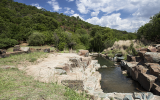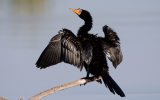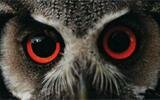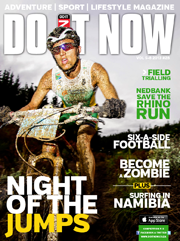- Magazine
- #readityourway
- Weekly Stories
- #shareyourstory
-
Adventure
- Abroad Travelling
- Africa Travelling
- Events
- Expos & Shows
- Festivals
- Fishing
- Free Diving
- Gliding
- Horse Riding
- Inspiring People
- Islands Travelling
- Kite/Windsurfing
- Motorbiking
- Motorised Water Sports
- Mountaineering
- Mountain Biking
- Off-road 4x4
- Off-road Motorbiking
- Paddling
- Performance Driving
- Photography
- Rock Climbing
- Rollerblading
- Sailing
- Scuba Diving
- Skateboarding
- Skydiving
- Snowboarding & Skiing
- Surfing
- Swimming
- Trail Running
- Wakeboarding
- Waveski Surfing
-
Sport
- Adventure Racing
- Fishing
- Free Diving
- Gliding
- Health & Fitness
- Horse Riding
- Inspiring People
- Kite/Windsurfing
- MMA
- Motorbiking
- Mountain Biking
- Multi-sport
- Off-road 4x4
- Off-road Motorbiking
- Paddling
- Performance Driving
- Photography
- Road Cycling
- Road Running
- Rock Climbing
- Rollerblading
- Sailing
- Scuba Diving
- Skateboarding
- Skydiving
- Snowboarding & Skiing
- Surfing
- Swimming
- Rugby
- Trail Running
- Triathlon
- Wakeboarding
- Waveski Surfing
- Lifestyle
- Calendar
Birding Hot Spots
Words & Photos: Wynand Rohde
Topic:
Bird Watching
In my last article, in DO IT NOW Magazine Issue 18, I discussed what you need to become a bird watcher and touched on the subject of where to start. Now I would like to share my birding hot spots with you, but before I carry on I just want to say that I’m no professional, but I am extremely passionate about my hobby and the tips and advice given are based on 14 years of birdwatching experience.

Birdwatching is a hobby that can be done alone or with the family, and anytime. So where can you go to watch and photograph our feathered friends, other than in your own garden? Good places to enjoy birdwatching are botanical gardens, bird sanctuaries, game reserves and parks, lagoons, wetlands, rivers, dams, and even beaches. But where you go really comes down to where you live and how far you are prepared to travel. Sasol has published a very nice map of birding hot spots in South Africa, which I’ve found to be very useful. My wife and I have visited a few of these, as well as some other great spots, and I recommend the following:
Marievale Bird Sanctuary
Rating: Excellent. This is one of my favourite birding spots, and what makes it so attractive is the fact that you can sit in one of the hides and wait for the birds to come to you. I have never been disappointed on a trip to Marievale.
Viewing options: Five bird hides, as well as sections in the field that you can drive through. It is mostly wetland and a haven for a variety of water birds. As water birds are easy to identify, this is a good place to visit if you are a beginner as it will help you to improve your identification skills.
Facilities: There are a number of ablution facilities, such as a toilet and basin, at each hide, as well as a picnic area with braai facilities. Drinking the water here is not recommended, so rather bring your own. In fact, I would suggest you bring your own cooler box if you are planning to visit any birding location.
Species: With a total list of over 280 species, including cormorant, African darter, grebe, heron, egret, yellow-billed stork, African spoonbill, ibis, duck, teal, and kingfisher, this sanctuary has become a magnet for twitchers as rare species are frequently reported here.
Location: Situated just outside of Nigel, you can use one of two routes. The main entrance is from the Nigel Delmas Road, but you can also use the entrance from the Springs Nigel Road. This route is more difficult as there is no signage to indicate the way.
Rietvlei Nature Reserve
Rating: Excellent. It is very similar to Marievale.
Viewing options: There are hides, but you do more viewing from your vehicle.
Facilities: There is a picnic spot and ablution facilities.
Species: Common water birds, a variety of grassland birds, chats, bee-eaters, kingfishers, and more.
Location: Situated 18 km from the centre of Pretoria and 38 km from the OR Tambo International Airport.
Kruger National Park
Rating: Excellent. This is the ultimate place for me as you get to see more than just birds. As there is so much to see, make sure you plan your day properly and take enough food and water with you.
Viewing options: Ninety percent is done from your vehicle.
Facilities: Ablutions are plentiful, but far apart.
Species: The list is very long with 507 bird species to feast your eyes upon, but the types of species you see depends on which camp or campsite you are staying in. If you want to spot raptures, vultures and other birds of prey, you will have to venture out into the park. But no matter where you are in the Kruger National Park, you won't be disappointed.
Location: Situated in the provinces of Limpopo and Mpumalanga.
De Hoop Nature Reserve
Rating: Good. I’ve only been there once and it was not the best time of the year.
Viewing options: Funnily enough, in De Hoop we worked the entire day from the vehicle and just couldn't get really close to the birds. However, on departure we spent some time at the entrance gate sitting on a wall and all the bird life came to us. Some came so close that I had to retreat to get focus for my photographs.
Facilities: The visitor’s centre has a curio shop, restaurant, and ablutions.
Species: Famous for its variety of resident and migratory bird species, more than 260 species, including the Cape sugar bird and other sunbirds, have been recorded on the reserve. De Hoop Vlei attracts large numbers of water birds, and the only remaining breeding colony of the rare Cape vulture in the Western Cape occurs at Potberg.
Located: Situated east of Bredasdorp, approximately 260 km from Cape Town, in the Overberg region, near the southern tip of Africa.
Other places I've found to be really interesting and rewarding are the Karoo National Park, Walter Sisulu Botanical Gardens, Pilanesberg Nature Reserve, and the West Coast. In South Africa we are truly spoilt for choice when it comes to beautiful places that provide the most spectacular birdlife. So wherever you are, be it at home or on holiday, remember to explore your surroundings and you'll be pleasantly surprised.
My final word of advice is to be very aware of your safety in any public area, in South Africa, as many of the birding spots are isolated and your equipment is valuable. Marievale has never had any incidents that I know of, whereas Nylsvlei Nature Reserve and Kirstenbosch Botanical Gardens have both had incidents of people being robbed. Therefore, when venturing into unfamiliar territory, take the time to find a birding club in the area you are visiting by searching the internet or speak to the local authorities, and always try to go in a group or at least with a friend.
Until the next time, happy birdwatching.
Issue:
Issue 20 Dec '12









